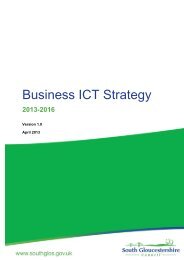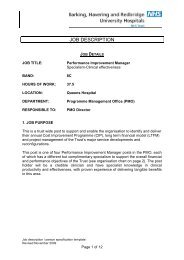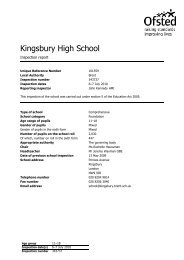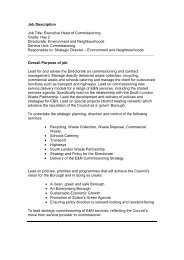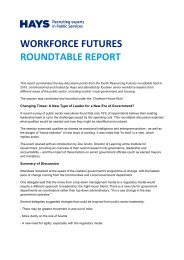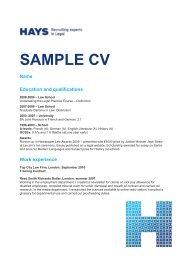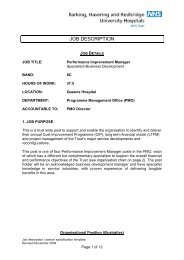RESOURCING AND TALENT PLANNING - Hays
RESOURCING AND TALENT PLANNING - Hays
RESOURCING AND TALENT PLANNING - Hays
You also want an ePaper? Increase the reach of your titles
YUMPU automatically turns print PDFs into web optimized ePapers that Google loves.
2012<br />
this area in 2009 to 27%). There is now an indication<br />
that addressing retention is returning to the agenda.<br />
The most common methods used to address<br />
retention in 2011, as in previous years, were to<br />
increase learning and development opportunities<br />
(47%), improve line managers’ people skills<br />
(46%) and improve the induction process (43%).<br />
Improving line managers’ people skills and<br />
learning and development opportunities were also<br />
most commonly rated among the top three most<br />
effective retention methods.<br />
The use of all the methods listed in Table 24<br />
has increased slightly in the last two years. The<br />
continued focus on costs, however, is still apparent.<br />
In 2007, before the recession hit, pay was the most<br />
popular method used to address retention, used<br />
by more than half of organisations. In 2011, just<br />
over a quarter (28%) reported they had improved<br />
pay to address retention. Improving benefits<br />
also remains less common compared with 2007.<br />
These changes may not, however, only be about<br />
cost savings. Improving pay and benefits are<br />
considered to be in the top three methods of<br />
retaining employees by only 22% and 15% of<br />
organisations respectively. Clearly these are just<br />
two of many factors that facilitate retention, and<br />
initiatives need to be tailored to organisational<br />
and employee requirements.<br />
Public sector organisations were more than twice<br />
as likely not to have taken any steps to address<br />
retention compared with the private or not-for-profit<br />
sectors (37% compared with 16% of private sector<br />
and 12% of not-for-profits). In particular they were<br />
less likely to have increased pay (6% compared with<br />
35% of the private sector and 22% of the not-forprofit<br />
sector) or benefits (13% compared with 29%<br />
of the private and 31% of the not-for-profit sector).<br />
Table 24: Steps taken specifically to address staff retention (%)<br />
Increased learning and development<br />
opportunities<br />
2012<br />
survey<br />
(used in<br />
2011)<br />
Most effective<br />
(top 3 of those<br />
used in 2011)<br />
2011<br />
survey<br />
(used in<br />
2010)<br />
2010<br />
survey<br />
(used in<br />
2009)<br />
2009<br />
survey<br />
(used in<br />
2008)<br />
2008<br />
survey<br />
(used in<br />
2007)<br />
47 37 38 35 47 46<br />
Improved line managers’ people skills 46 31 39 42 39 37<br />
Improved induction process 43 19 38 31 45 45<br />
Improved employee involvement 39 23 34 32 35 29<br />
Improved selection techniques 37 22 30 31 42 46<br />
Improved pay 28 22 27 22 42 53<br />
Offered coaching/mentoring/buddy systems 28 13 24 20 24 22<br />
Improved benefits 27 15 21 19 32 36<br />
Created clearer career paths 22 17 18 21 18 17<br />
Made changes to improve work–life<br />
balance<br />
Revised the way staff are rewarded so their<br />
efforts are better recognised<br />
Better promotion to employees of the<br />
employer brand<br />
21 15 17 19 31 30<br />
20 11 18 14 19 19<br />
18 7 18 15 21 16<br />
Improved physical working conditions 16 5 15 13 19 12<br />
Redesigned jobs to make them more<br />
satisfying<br />
16 9 11 13 18 14<br />
Increasing our use of counter-offers* 5 2 4 – – –<br />
No specific initiatives undertaken 19 – 23 27 13 9<br />
Base: 459 (2012 survey); 559 (2011 survey); 431 (2010 survey); 695 (2009 survey); 710 (2008 survey)<br />
* New item added in 2011<br />
<strong>RESOURCING</strong> <strong>AND</strong> <strong>TALENT</strong> <strong>PLANNING</strong> 2012<br />
31




